Corylus americana
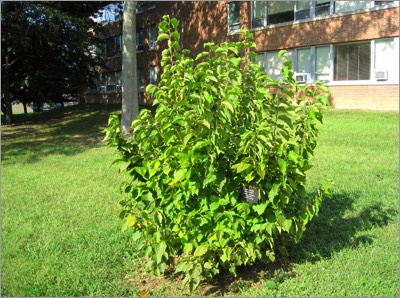
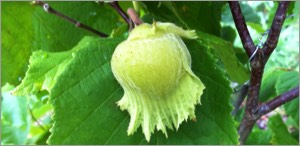
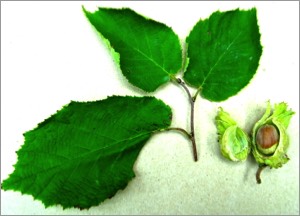
Corylus americana
AMERICAN HAZELNUT
Betulaceae
E. North America
Location: map coordinates K-11 (west of Conwell Hall),
N 39°11'13'' W 75°32'43''
Planting history: planted 5/6/10. Source: Delaware Nature Society. (Dr. S. Yost, USDA NIFA Capacity Building Grant funds).
Description:
Native species, S4 (common, but not very common) in piedmont and coastal plain of New Castle and Kent Counties of Delaware
AMERICAN HAZELNUT
Betulaceae
E. North America
Location: map coordinates K-11 (west of Conwell Hall),
N 39°11'13'' W 75°32'43''
Planting history: planted 5/6/10. Source: Delaware Nature Society. (Dr. S. Yost, USDA NIFA Capacity Building Grant funds).
Description:
- deciduous shrub
- etymology: Corylus = from Greek name (korylus); americana = from America
- leaves simple, toothed (simiar to leaves of birch trees; same family)
- flowers small, wind-pollinated (male flowers in catkins)
- edible nuts enclosed in distinctive leafy bracts; seeds food for wildlife, and humans
- grows well in shade or sun; 4’-10’ tall; may sucker to form clumps
- wood believed to have special powers in ancient times - used against lightning and witches; and (even today) as divining/dowsing rods to find ground water
Native species, S4 (common, but not very common) in piedmont and coastal plain of New Castle and Kent Counties of Delaware
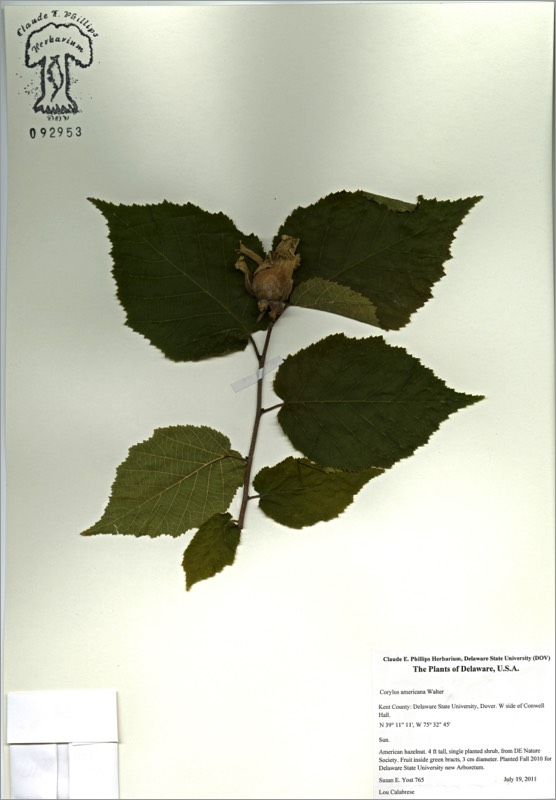
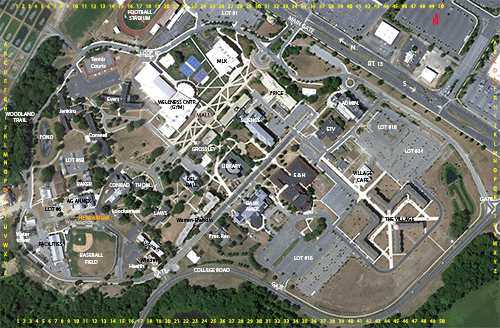
HIT REFRESH TO START LOCATION GRAPHIC